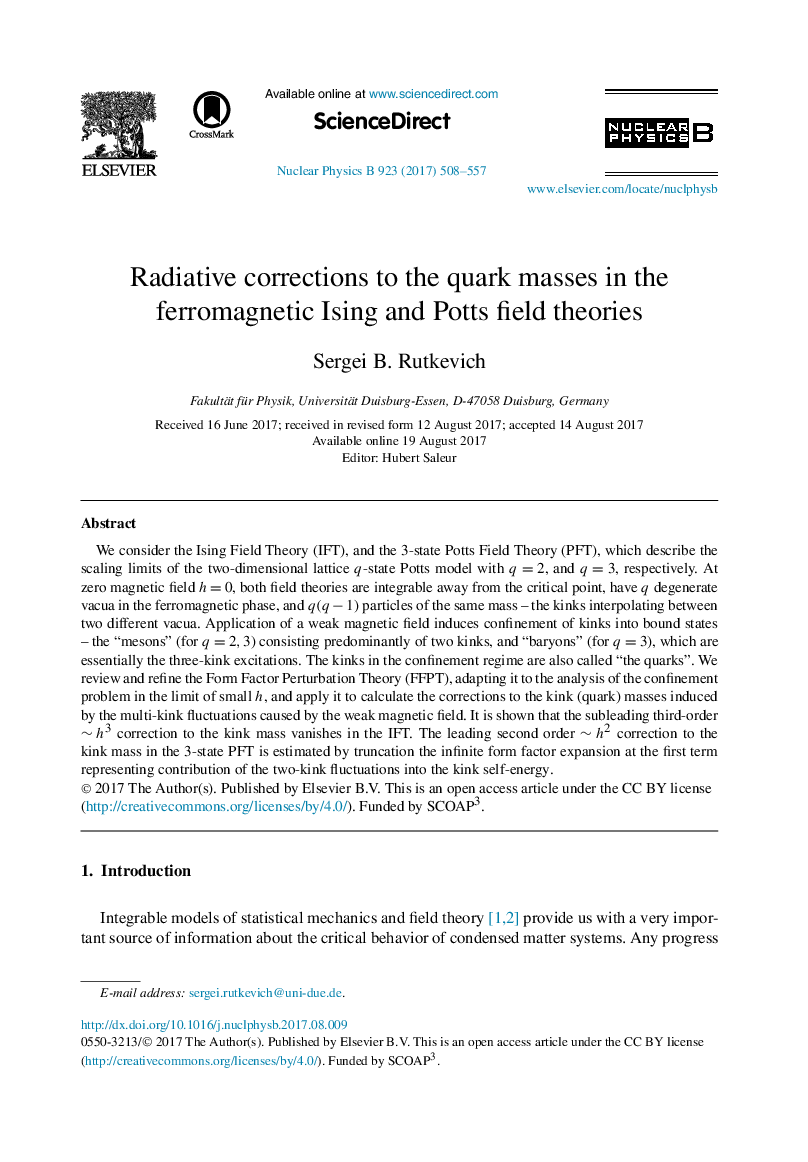| Article ID | Journal | Published Year | Pages | File Type |
|---|---|---|---|---|
| 5494372 | Nuclear Physics B | 2017 | 50 Pages |
Abstract
We consider the Ising Field Theory (IFT), and the 3-state Potts Field Theory (PFT), which describe the scaling limits of the two-dimensional lattice q-state Potts model with q=2, and q=3, respectively. At zero magnetic field h=0, both field theories are integrable away from the critical point, have q degenerate vacua in the ferromagnetic phase, and q(qâ1) particles of the same mass - the kinks interpolating between two different vacua. Application of a weak magnetic field induces confinement of kinks into bound states - the “mesons” (for q=2,3) consisting predominantly of two kinks, and “baryons” (for q=3), which are essentially the three-kink excitations. The kinks in the confinement regime are also called “the quarks”. We review and refine the Form Factor Perturbation Theory (FFPT), adapting it to the analysis of the confinement problem in the limit of small h, and apply it to calculate the corrections to the kink (quark) masses induced by the multi-kink fluctuations caused by the weak magnetic field. It is shown that the subleading third-order â¼h3 correction to the kink mass vanishes in the IFT. The leading second order â¼h2 correction to the kink mass in the 3-state PFT is estimated by truncation the infinite form factor expansion at the first term representing contribution of the two-kink fluctuations into the kink self-energy.
Related Topics
Physical Sciences and Engineering
Mathematics
Mathematical Physics
Authors
Sergei B. Rutkevich,
